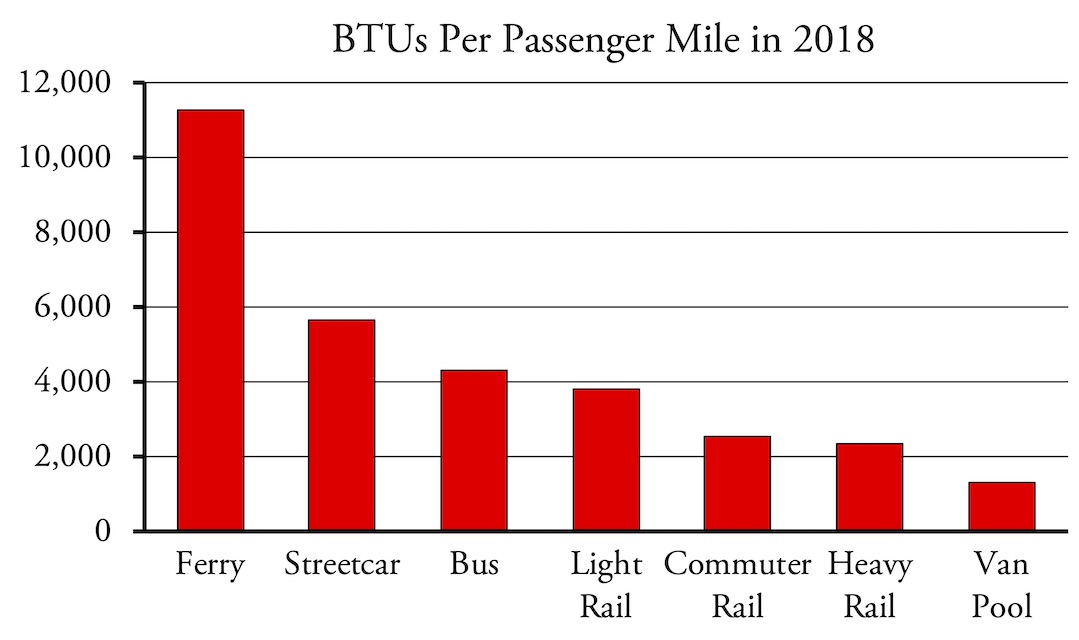Since the advent of Valley Metro Light Rail Service in the Phoenix Metro Area - and the extension through Mesa's Downtown Central Business District in 2014 and the Gilbert Road Terminus in 2019 - the benefits of urban transit are highly touted and frequently over-hyped.
Here's information and data in today's Featured Story

"Transit is often touted as a way to save energy. But since 2009 transit has used more energy, per passenger mile, than the average car.
Since 2016, transit has used more than the average of cars and light trucks together."
Report from New Geography 06 January 2020
_________________________________________________________________________
Automobiles and planes are becoming more energy efficient each year. But the annual reports of the National Transit Database reveals that urban transit is moving in the opposite direction, requiring more energy to move each passenger one mile in each of the last four years.
Energy Consumption by ModeThe calculations show that ferries and streetcars use huge amounts of energy per passenger mile, as do automated guideways (i.e., people movers), which aren’t shown in the chart but average even more energy per passenger mile than ferries. Buses and light rail are well above the average automobile.
Ironically, the most energy-efficient transit mode–van pools–is the one that is based on conventional automobiles rather than large buses or railcars.
Commuter and subway/elevated trains (heavy rail) appear to be more efficient, but this is largely because commuter- and heavy-rail numbers are dominated by New York where occupancy rates are high. > Commuter rail lines in such regions as Dallas-Ft. Worth, Miami, and even Philadelpha use far more than the average amount of energy per passenger mile, as do heavy rail lines in Baltimore, Boston, Los Angeles, and Miami.
> Perhaps the biggest surprise is the DC Metrorail, the nation’s second-most heavily used rail system, which consumes almost 25 percent more energy per passenger mile than the average light truck used in 2017.
Read the rest of this piece at The Antiplanner.
_________________________________________________________________________
Randal O'Toole is an economist with forty years of experience critiquing public land, urban, transportation, and other government plans.


